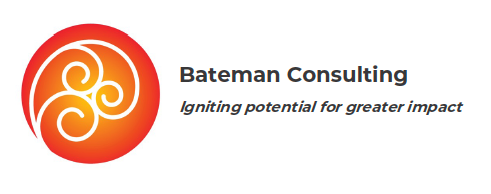‘Go big or go home,’ he said.
I thought about all of the organisations I’ve worked with over the years, whether as a funder offering technical assistance, an executive growing and implementing new programmes, and a consultant advising and supporting organisations to grow (or simply maintain!). All were serving the ‘greater good’ as health, mental health, social service, disability service organisations.
I thought about what ‘big’ means – and to each one, depending on their view and perspective, it meant something different. Size, impact, influence – there’s a million ways to go ‘big’. And big for one may not look very big to the other.
The commonality was the desire to do good, the desire to increase the impact for the people that they were serving. To make a difference in people’s lives and in the world.
Sometimes, in NGO world, the stars align and this opportunity arises.
It is amazing and exciting.
It is also terrifying.
You know that you are there to help people. Done well, you could help a lot of people. Not done well…. This is the intimidating part.
Scaling is not a dark art.
Though sometimes it feels like it is, especially in sectors where we don’t have widgets, we have people. Yes, we can measure things and count things, and organise inputs or outcomes. But the minute we forget about the big hearts doing work, or the hurting hearts needing support, we start losing the threads.
What to do, you say?
I decided to write this because of many people (like CEOs, general managers, government organisation leaders) I talk to who have the opportunity to begin scaling, and are looking for implementation solutions that fit their organisations and situations. I’ve been immersed in this area for the last 15 years or so (and am always learning, too). And I like to share.
Many years ago, when designing a program for children whose parents had mental health and addiction issues, I proposed a ‘person-centered’ approach. The primary objective was to look at the needs of the families – parents of children often struggle for options during the school holidays, and it’s even more difficult if you have other things weighing on your mind. Instead of formatting it in a standard ‘treatment’ approach, it was a school holiday program format (which was quite different at the time) using available therapeutic evidence base. We made it a fun place to go – and embedded the therapeutic elements. The kids had some psycho-social education, social skills building, therapeutic interactions and play-based activities. The parents had some time to form connections with peers and be in a therapeutic group that focussed on their children and parenting. The short program ended with the families going on an outing that was designed to be fun and oriented to cooperation and attachment. The program was met with rave reviews, and families wanting to attend every school holiday. Early quantitative and qualitative data told us, as the parents did, that it had made an impact on the families.
So - it’s not super science. It’s practical planning things (with a good dose of technical ‘stuff’). It’s some good people skills and some good business skills. With a heavy dose of dedication.
Know the people – design and implementation of a person-centered program means the collective ‘you’ know who you are serving, hears their needs, knows how, why, and where of the nooks and crannies related to what you are delivering or developing. Most importantly see the people and not the issue. If you want to start applying all of those User Experience and User Interface (UX/ UI) principles, go for it. ‘If you build it, they will come’ is so NOT true. Let’s not do that anymore.
Know what you’re doing, why you’re doing it and if it makes a difference – I love to focus on evidence, logic models/ theory of change, impact assessment, budget structuring to program design, operational structure, etc. Why? Because this is how you know that the things you’re doing are effective (meaningful) and efficient (not throwing resources down the drain or wasting time). Knowing what has happened in the past to inform the future is just logical and is too often a step that is skipped. I’ll talk a bit more about this in my next blog.
Know your team – and how to inspire their passion and their love for the new thing that is happening. They are the ones who will make and sustain the change and impact. The unsung heroes of social change.
Good management is about knowing their skills and their passion in applying those skills. As a team, you know your individual roles and take advantage of each other’s’ strengths. You also have to know their limits. So many times I’ve seen passionate people who do this work with all of their heart become overworked, overtired and burnt out. A bit of resource, some good coaching, a smattering of expertise and guidance can go a long way.
In closing – if you like what you’re reading, leave a comment. And if you don’t leave a comment. And keep an eye out for Part 2…
And if this sounds like some of the problems you’re trying to solve - get in touch and let’s explore options.










